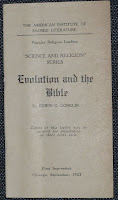Evolution 2010: Tuesday
I had a good day wrapping up my time at Evolution 2010. I started out in the Speciation and Hybridization session, where I heard a couple of interesting talks. Amanda Brothers explained her work demonstrating Haldane's rule in Silene species with heteromorphic sex chromosomes [ ABSTRACT ]. Then Chris Nice presented his discovery of multiple hybrid populations of the same two butterflies. He suggested that they might be independent origins of the same hybrid species. In the next session on hybridization, I got all nostalgic listening to David Marsh describe his work with the recently described salamander Plethodon sherando . P. sherando is related to the red-backed salamander P. cinereus , but while cinereus is widespread, sherando is found on a single mountain peak in the Blue Ridge Mountains of Virginia. This is kind of a pattern in the area, where certain Plethodon species have very restricted ranges (endangered Shenandoah salamander and the Peaks of Otter salama



